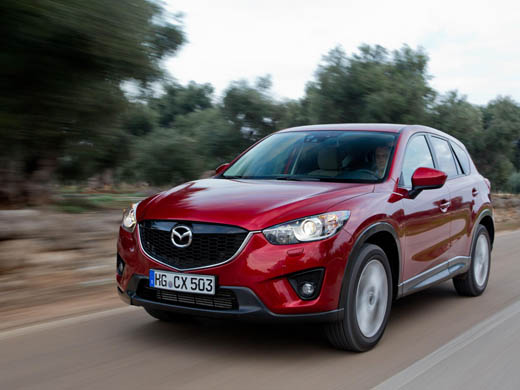Mazda Blog UK takes an in-depth look at the company’s SKYACTIV technology, which will feature in all of Mazda’s sixth generation models starting with the all-new Mazda CX-5, is particularly relevant for Mazda’s fleet customers with reduced running costs through class leading fuel economy and low CO2.
Steve Tomlinson, Head of Fleet for Mazda UK said: “Mazda started developing its SKYACTIV suite of technology in 2006 using a ‘clean sheet’ approach where engineers were given the freedom to design the technology from the ground up. Remaining true to the internal combustion engine, SKYACTIV technology gives a 30 per cent improvement in fuel economy and a 25 per cent improvement in CO2. The low BIK tax ratings based on CO2 emissions are sure to appeal to the fleet marketplace in particular.”
Attractive pricing will be another key attraction for fleet users. Prices start from £21,395 (OTR) for the Mazda CX-5 SE-L, rising to £28,795 for the Mazda CX-5 AWD Sport NAV Auto.
“SKYACTIV technology offers a usable fun-to-drive eco approach that people can recognise and trust, plus for fleet managers the RVs are easier to predict than they are for electric or hybrid vehicles,” said Tomlinson. “Operational costs are reduced and there is no compromise in performance or handling with our complete eco solution.”
Tomlinson added: “Mazda is expecting the all-new Mazda CX-5 to have strong appeal in the fleet market and with company car drivers. Excellent residual values are being predicted for this model, part due to the focus on refinement of proven, existing technology. There is still some uncertainty over hybrids and electric vehicles and the business world likes to deal in certainties.”
The Mazda CX-5 promises major total cost of ownership savings for fleet operators and significant financial benefits for company car drivers over rival models. For example, the 2.2-litre SKYACTIV-D diesel 2WD SE-L 150ps is forecasted by EurotaxGlass’s to have a residual value of £10,666 (46%) at three years/60,000 miles, comfortably ahead of rivals Nissan Qashqai, Toyota RAV4, and the Ford Kuga, and a full 10 percentage points better than the Hyundai ix35 Style 2.0-litre CRDi 2WD model, which retains a value of £6,908 (36%) over the same period and mileage.
In addition depreciation is more than £700 less than on the more expensive equivalent Volkswagen Tiguan meaning the CX-5 is class-leading for this model in depreciation terms too.
“The new range of SKYACTIV technology models, starting with the all-new Mazda CX-5, will allow us to again grow volume on the back of new product at the start of this decade, just as we did at the start of the last decade when Mazda6 spearheaded a product-led renaissance,” commented Tomlinson.
The Mazda CX-5 goes on sale from the spring; four petrol models and six diesels will come with 2-wheel drive, while all-wheel drive will be available for eight diesel models. Prices for 2.0-litre petrol versions start from £21,395 (OTR) for the CX-5 SE-L and rise to £23,995 for the CX-5 Sport NAV.
Diesel CX-5 prices for the 2.2-litre 150ps models begin at £22,995 for the SE-L and step up to £24,295 for the SE-L Auto, to £25,595 for the Sport Nav and £24,695 for the entry-level AWD model. Prices for 2.2-litre 175ps diesel models kick-off at £27,195 for the CX-5 AWD Sport.

